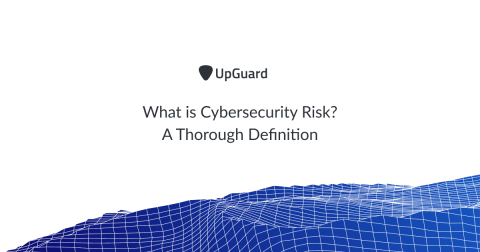Security | Threat Detection | Cyberattacks | DevSecOps | Compliance
Risk Management
What is Cyber Risk?
Cyber risk is defined as exposure to harm or loss resulting from data breaches or cyber attacks on information systems, information technology and information security. However, this definition must be broadened. A better, more encompassing definition is the risk of financial loss, disruption or reputational damage due to the failure of an organization's cybersecurity strategy.
Lessons learned conducting an information security risk assessment
In an age where businesses are relying more than ever on the rapid advancements in technology to drive innovation, strategy, growth and competitive advantage, it is clear the prevalence of technology is not slowing down. But the increase in new devices and systems that utilize connectivity, as well as the transition to the network of devices and systems that were traditionally air-gapped, brings with it an increased cybersecurity risk.
How does risk management reduce the impact of a cyber attack?
What do healthcare, banking, and the insurance industry all have in common? RISK! Regardless of industry, having an application, or system compromised could mean the exposure of extremely sensitive information. If such information became public knowledge your business could suffer tremendously. For many companies, a data breach is the worst possible situation imaginable. How does an organization work to reduce the impact of a system being compromised?
How to Automate Vendor Risk Management
Third-party vendors are an important source of strategic advantage, cost savings and expertise. Yet outsourcing is not without cybersecurity risk. As organizations' reliance on third-parties grow, so too does their exposure to third-party risk and fourth-party risk. In fact, a recent HSB survey found nearly half of data breaches in 2017 were caused by a third-party vendor or contractor.
Revisiting The Concepts of Disaster Recovery and Risk as Organizations Move Their Infrastructure To The Cloud
The calculus for disaster recovery and risk management is changing. Most small businesses within the past decade would often keep many of their critical technology assets locally, perhaps in a server closet, or a centralized data center for multiple offices. They built their own “vault” of applications, databases, email, files, etc., often on a few physical servers they would be wholly responsible for maintaining and eventually upgrading or replacing.
What is Vendor Risk Management: The Definitive Guide to VRM
Vendor risk management (VRM) deals with the management and monitoring of risks resulting from third-party vendors and suppliers of information technology (IT) products and services. VRM programs are concerned with ensuring third-party products, IT vendors and service providers do not result in business disruption or financial and reputational damage.
Introducing ZenGRC + ZenConnect
At Reciprocity, our mission has always been to simplify the way your organization manages risk and compliance, and to encourage transparency and trusted relationships with your key stakeholders. With ZenGRC, we delivered the industry’s best GRC solution and simplified a traditionally complicated tool to make it easy for CISOs, CROs and CCOs to manage their organization’s information security. Today, we are excited to announce our next massive milestone: ZenConnect.
IoT Devices - Why Risk Assessment is Critical to Cybersecurity
As technology continues to pervade modern-day society, security and trust have become significant concerns. This is particularly due to the plethora of cyber attacks that target organizations, governments and society. The traditional approach to address such challenges has been to conduct cybersecurity risk assessments that seek to identify critical assets, the threats they face, the likelihood of a successful attack and the harm that may be caused.
What Is Cybersecurity Risk? A Thorough Definition
Cybersecurity risk is the probability of a cyber attack or data breach on your organization. Organizations are becoming more vulnerable to cyber threats due to the increasing reliance on computers, networks, programs, social media and data globally. Data breaches, a common cyber attack, have massive negative business impact and often arise from insufficiently protected data.










